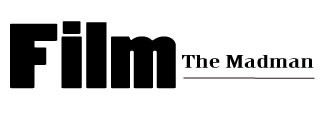Christine
★ 4/4
Murdock plays the eponymous character, a pasty-faced girl in her early teens, who is both an addict and a supplier of heroine. It appears that her clientele only include her four similarly aged friends. How she manages to procure her supply is not assigned much importance. Heroine is simply a presence, and so is her, and everyone else’s, addiction. And unlike most movies on this theme, money is not an issue. These kids belong to comfortable suburban homes and don’t seem to be under any kind of duress.
In his 2005 monograph, Alan Clarke, Dave Rolinson states that, “Christine . . . resists conventional narrative causality, and draws attention to that resistance in its use of aborted narratives.” What Rolinson is referring to is the film’s tendency to avoid following up on any plot points that pop up during the brief conversations shared by the characters, always seen in ones or twos. There’s some talk of a party in which all five kids would get together, but it doesn’t amount to much. More significantly, the lone other female of the bunch mentions a domestic abuse situation, but again, it’s only in passing. “Are you alright?” is Christine’s patented question-response to any sign of affliction that she encounters. Clarke and his screenwriter, Arthur Ellis, have a very mordant sense of humor. No, it’s not a coincidence that she often crosses from Keats Way to Coleridge Way, streets named after two English poets who were known to be addicted to opium.
Ellis has rightly described Christine as a “walking film.” The same tag could also be applied to Clarke’s other late-eighties work for television, namely The Road (1987) and Elephant (1989). The repetitive nature of the lonely walks taken by the titular character is clearly meant to mirror the similarly mechanical, affectless nature of taking drugs. Even when two of the kids shoot up together, they do not, and cannot, share each other’s high, or low.
Although Uli Edel’s 1981 Christiane F. served as a reference point for the filmmakers, this spare, minimalist effort is utterly devoid of its conventional moral precepts and dramatic trajectory. However, like Bresson’s work, it would also be incorrect to label it cold or clinical. The lack of narrative markers for easy emotional identification doesn’t imply a negation of emotion. Christine’s innocent getup alone, complete with a hairband, makes her a heartbreaking casualty. A cartoon is usually running in the background as the characters are gathering the required paraphernalia.
Clarke, who would pare down his aesthetic even further in Elephant, which could be regarded as Christine‘s structural twin, has constructed a piece of work whose matter-of-fact ordinariness is its most striking quality. Here’s hoping that one day it will receive the recognition it so thoroughly deserves.


Leave a comment